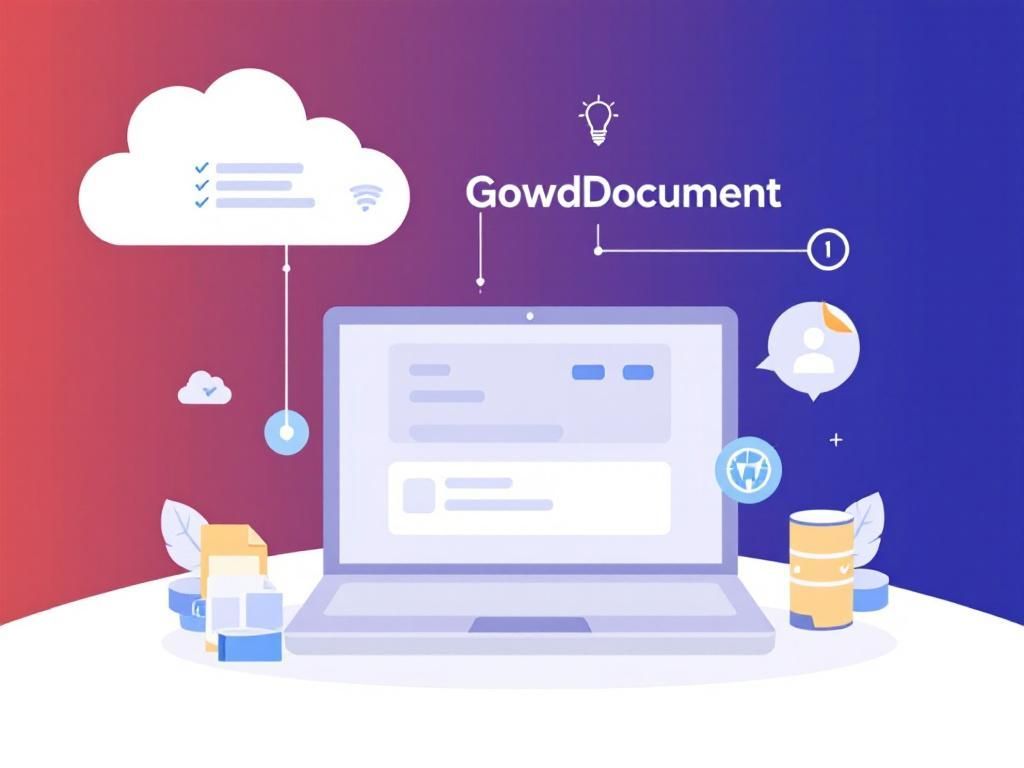In the rapidly evolving landscape of digital transformation, organizations are increasingly seeking robust solutions to streamline their document management processes. Intelligent Document Processing (IDP) platforms are at the forefront of this shift, enabling businesses to automate data extraction, classification, and management. The year 2025 is poised to witness significant advancements in IDP technologies, enhancing not only efficiency but also security and compliance. This article delves into the leading IDP platforms transforming the way organizations handle documents and data.
Understanding Intelligent Document Processing
Intelligent Document Processing combines artificial intelligence (AI), machine learning (ML), and natural language processing (NLP) to automate the extraction and processing of information from documents. By utilizing these technologies, businesses can:
- Reduce manual data entry
- Enhance data accuracy
- Improve operational efficiency
- Ensure compliance with regulations
With digital documents becoming the norm, IDP plays a crucial role in managing vast amounts of unstructured data, enabling organizations to gain valuable insights and make informed decisions.
Key Features of Leading IDP Platforms
As the demand for IDP solutions grows, several platforms have emerged as leaders in the space. Below are some of the key features that set these platforms apart:
1. Advanced Data Extraction
Most IDP platforms offer advanced data extraction capabilities, utilizing AI and ML algorithms to identify relevant information from various document types, including:
- Invoices
- Contracts
- Forms
- Emails
2. Intelligent Classification
Intelligent classification enables automation in sorting documents based on predefined categories. This feature significantly reduces the time required for data organization.
3. Integration Capabilities
Leading IDP platforms provide seamless integration with existing enterprise systems such as:
- Customer Relationship Management (CRM)
- Enterprise Resource Planning (ERP)
- Content Management Systems (CMS)
4. User-Friendly Interfaces
A user-friendly interface is crucial for adoption within organizations. Many IDP platforms prioritize intuitive dashboards and easy navigation, allowing users to operate them with minimal training.
Leading IDP Platforms for 2025
As we look towards 2025, several IDP platforms have gained traction due to their innovative approaches and comprehensive features. Below is a breakdown of some of the most notable platforms:
| Platform | Key Strengths | Industry Applications |
|---|---|---|
| ABBYY FlexiCapture | Optical Character Recognition (OCR), Automates data extraction | Finance, Healthcare, Legal |
| UiPath Document Understanding | End-to-end automation, Robotic Process Automation (RPA) integration | Manufacturing, Retail, Insurance |
| Kofax Transformation Mobilization | Mobile capture, AI-powered analytics | Logistics, Education, Government |
| Microsoft Azure Form Recognizer | Customizable models, NLP capabilities | Healthcare, Banking, Real Estate |
Impact on Business Processes
The adoption of IDP platforms can drastically alter how organizations manage their document-centered processes. Here are some of the key impacts:
Enhanced Efficiency
By automating data extraction and classification, organizations can significantly cut down on manual labor and processing times. This leads to faster decision-making and improved resource allocation.
Cost Savings
Implementing IDP solutions can result in substantial cost savings by reducing labor costs associated with manual data entry and minimizing errors that could lead to financial losses.
Improved Compliance and Security
With stringent regulations governing data usage, IDP platforms help ensure compliance by maintaining accurate records and enabling secure data handling processes.
Challenges and Considerations
Despite their advantages, organizations must consider several challenges when implementing IDP platforms:
- Change Management: Transitioning to an IDP solution may require significant cultural shifts within an organization.
- Data Privacy: Organizations must ensure that the platforms comply with relevant data protection regulations.
- Integration Issues: Seamless integration with existing systems can sometimes prove complex.
The Future of IDP
Looking ahead, the future of IDP is promising, with continuous advancements in AI and machine learning paving the way for even more sophisticated capabilities. Here are some trends to watch for:
1. Increased Adoption of AI
As AI technologies become more accessible, we can expect broader adoption of intelligent document processing across various industries.
2. Greater Focus on User Experience
Future developments will likely prioritize user experience, ensuring that even non-technical users can leverage these platforms effectively.
3. Enhanced Security Measures
With growing concerns over data breaches, IDP platforms will continue to evolve their security protocols to protect sensitive information.
Conclusion
The landscape of document management is changing rapidly, driven by the capabilities of Intelligent Document Processing platforms. By embracing these technologies, organizations can enhance operational efficiency, improve compliance, and ultimately drive better business outcomes. As we step into 2025, the impact of IDP will only grow, making it an essential component of any digital transformation strategy.
FAQ
What are IDP platforms and how do they transform document management?
IDP platforms, or Intelligent Document Processing platforms, utilize artificial intelligence and machine learning to automate the extraction, classification, and processing of data from documents, significantly enhancing document management efficiency.
What features should I look for in an IDP platform in 2025?
In 2025, look for IDP platforms that offer advanced machine learning capabilities, seamless integration with existing systems, robust security measures, and user-friendly interfaces to ensure effective document management.
How do IDP platforms improve operational efficiency?
IDP platforms improve operational efficiency by automating repetitive tasks, reducing human error, and speeding up the processing of documents, which ultimately leads to faster decision-making and better resource allocation.
Can IDP platforms handle various document types?
Yes, modern IDP platforms are designed to handle a wide variety of document types, including invoices, contracts, and forms, making them versatile solutions for diverse document management needs.
What industries benefit the most from IDP platforms?
Industries such as finance, healthcare, legal, and manufacturing benefit significantly from IDP platforms due to their need for efficient document processing and data management.
Are IDP platforms secure for sensitive data management?
Most reputable IDP platforms implement advanced security protocols, including encryption and compliance with data protection regulations, ensuring that sensitive data is managed securely.


